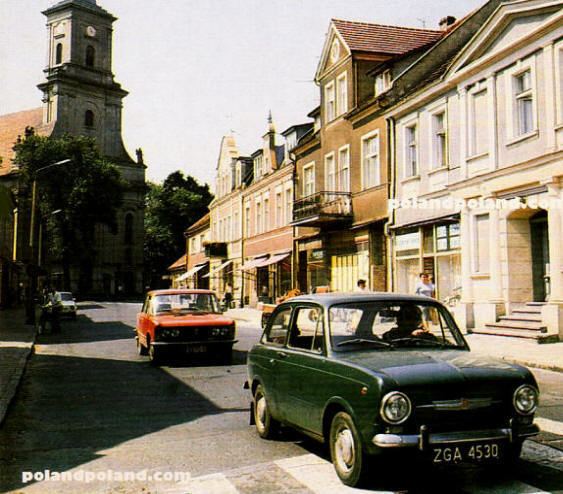Population 13,557 (2006) | County Wolsztyn County Postal code 64-200, 64-201 Area 4.78 km² Local time Wednesday 5:42 AM | |
 | ||
Weather 8°C, Wind W at 10 km/h, 91% Humidity Voivodeship | ||
Parada parowoz w wolsztyn 2016 full hd 50fps steam locomotive parade wolsztyn 2016
Wolsztyn [ˈvɔlʂtɨn] (German: Wollstein) is a town in western Poland, on the western edge of Greater Poland Voivodeship (from 1975 to 1998 it was in Zielona Góra Voivodeship). It is the seat of Wolsztyn County, and of the smaller administrative district of Gmina Wolsztyn.
Contents
- Parada parowoz w wolsztyn 2016 full hd 50fps steam locomotive parade wolsztyn 2016
- Map of Wolsztyn Poland
- Wolsztyn inspiruje film promocyjny 2013
- Geography
- History
- Locomotive depot
- Twin towns Sister cities
- Notable people
- Sport
- Major corporations
- Media links
- References
Map of Wolsztyn, Poland
Wolsztyn inspiruje film promocyjny 2013
Geography
The town is situated within the historic Greater Poland region, located on the small Dojca river, a headstream of the Obra, about 72 kilometres (45 mi) southwest of Poznań.
The municipal area includes a large lake (Jezioro Wolsztyńskie; Wolsztyn Lake), next to which is a former palace built in Classical style in the early 20th century, now used as a hotel and restaurant, and a park. Nearby tourist destinations include the Pszczew Landscape Park and the Przemęt Landscape Park.
History
The current settlement was established about 1285 on a causeway across the swampy Dojca River, probably by Cistercian monks descending from Obra Abbey. It developed as a centre of wool (German: Wolle) trade and cloth manufacturing on the road from Poznań to Lusatia, vested with market rights in 1424. Wolsztyn's town privileges were confirmed in 1519. Part of the Greater Polish Poznan Voivodeship for centuries, it was annexed by Prussia in the course of the Second Partition of Poland in 1793.
With the Prussian Province of Posen it became part of the German Empire in 1871 and a target of the Germanisation policies carried out by the German Eastern Marches Society (Hakata). After World War I Wolsztyn returned to the newly established Second Polish Republic upon the Greater Poland Uprising in 1918–19. With the 1939 Invasion of Poland, the town was again incorporated into the Nazi German Reichsgau Wartheland until the end of World War II.
The town has a Baroque parish church dating from the 18th century, as well as several other museums.
Locomotive depot
The railway line from Wolsztyn to Zbąszyń opened in 1886. The Bahnbetriebswerk (Parowozownia) Wolsztyn is famous as the location of a locomotive roundhouse, which is the last place in Europe to supply standard gauge steam locomotives for regular, timetabled train services on the national railway network. As of 2011 these services run to Leszno and Zbąszynek. The site also includes a railway museum featuring restored locomotives.
Since 1993 the Polish State Railways organises an annual parade of locomotives, which takes place at the start of May. The 2007 event, which also celebrated the roundhouse's centenary, attracted about 20,000 visitors.
Twin towns — Sister cities
Wolsztyn is twinned with:
